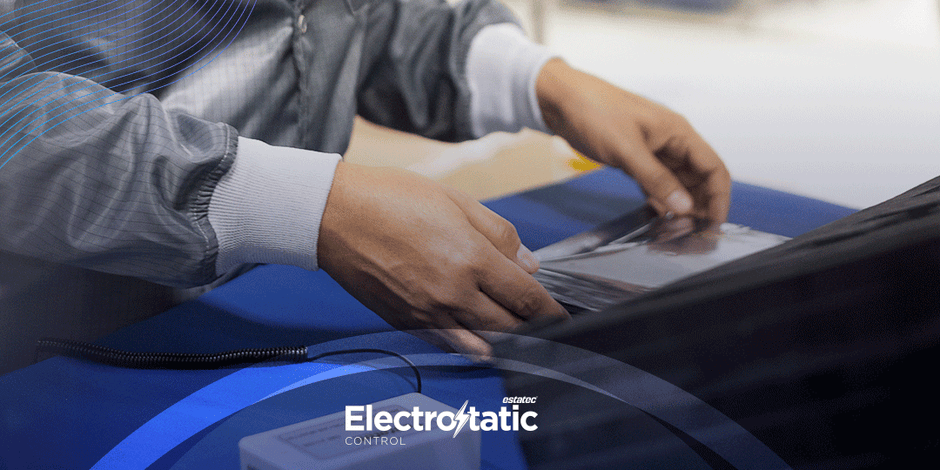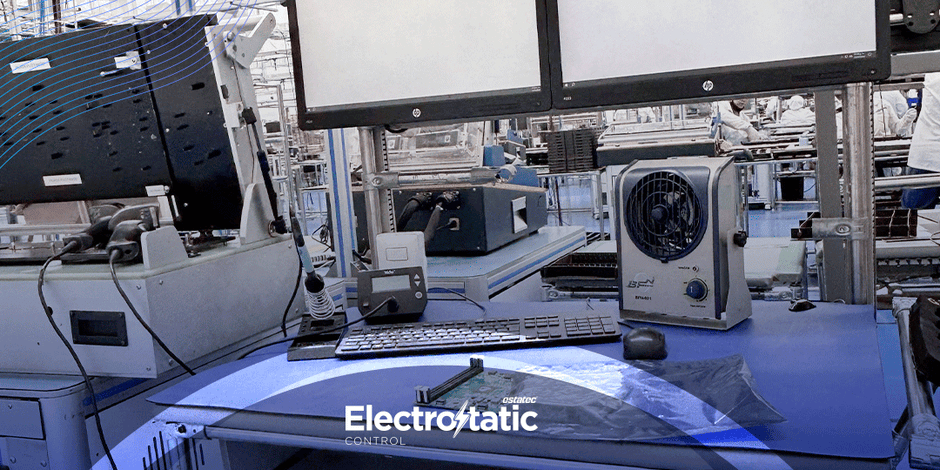In today's digital age, the importance of maintaining a static-safe workspace cannot
be overstated, especially for those who handle sensitive electronic equipment.
Electrostatic discharge (ESD) can cause significant damage to electronics, leading to costly repairs and data loss. Fortunately, there are practical and affordable strategies to control ESD, making it accessible for home offices and small businesses. This article offers actionable tips to create an effective ESD control environment, ensuring the longevity and reliability of your electronic devices.
Electrostatic discharge occurs when there is a sudden flow of electricity between two electrically charged objects caused by contact, an electrical short, or dielectric
breakdown. This discharge can damage electronic components, degrade their
performance, or even render them completely inoperable. For individuals and small
businesses relying on electronics, preventing ESD is crucial for maintaining
productivity and avoiding unexpected expenses.
Key Strategies for ESD Control
● Grounding and Bonding: Grounding is the cornerstone of ESD control. By
creating a direct path for the static electricity to flow to the earth, you can
prevent ESD damage. Here are some practical grounding solutions:
● Use ESD Mats: Place anti-static mats on your workbench and under
your chair. These mats are designed to dissipate static electricity safely. Ensure they are connected to a common grounding point.
● Wrist Straps: Wear a wrist strap connected to a grounding point while working
with sensitive electronics. This ensures any static charge on your body is
continuously discharged.
The environment plays a significant role in the buildup of static electricity. Consider
these adjustments to your workspace:
● Humidity Control: Maintain a relative humidity level of 40-60%. Dry air
increases static buildup, while higher humidity helps to dissipate it. Use a
humidifier to regulate humidity levels, especially in dry climates.
● Anti-Static Flooring: If possible, install anti-static flooring in your workspace.
Carpets can be a major source of static buildup; therefore, opting for anti-
static tiles or mats can significantly reduce the risk of ESD.
Organize your workstation to minimize the risk of static discharge:
● ESD-Safe Tools: Use tools and equipment that are specifically designed to be
ESD-safe. This includes tweezers, screwdrivers, and other hand tools.
● Clean Workspace: Keep your workstation clean and free of dust. Dust
particles can carry static charges and contribute to ESD.
Your personal habits and attire can influence the static levels in your workspace:
● Clothing: Wear ESD-safe clothing, such as cotton garments. Avoid synthetic
fabrics that are more likely to generate static.
● Footwear: Use ESD-safe shoes or heel straps to ensure you are grounded
when moving around your workspace.
● Proper handling of electronic components is vital in preventing ESD damage:
● Transport and Storage: Store and transport sensitive components in anti-
static bags or containers. These are designed to shield electronic parts from
static electricity.
● Handling Components: Always handle electronic components by their edges
and avoid touching the circuitry directly.
Investing in ESD control products can provide additional layers of protection:
● Ionizers: Use ionizers to neutralize static charges in the air. These devices
emit ions that attach to and neutralize charged particles.
● Anti-Static Sprays: Apply anti-static sprays to surfaces in your workspace to
reduce static buildup.
For small businesses and home offices, budget-friendly options are available to
implement ESD control measures effectively:
● DIY Grounding Solutions: Create your own grounding point using conductive
materials connected to a grounding rod or an electrical outlet's ground pin.
● Repurposed Materials: Use conductive fabrics or aluminum foil as temporary
anti-static mats or covers.
Creating a static-safe workspace is essential for anyone working with electronics,
whether in a home office or a small business setting. By implementing these
practical strategies and affordable solutions, you can protect your equipment from
the damaging effects of ESD. A proactive approach to ESD control not only ensures
the longevity of your electronic devices but also contributes to a more reliable and
efficient working environment.









